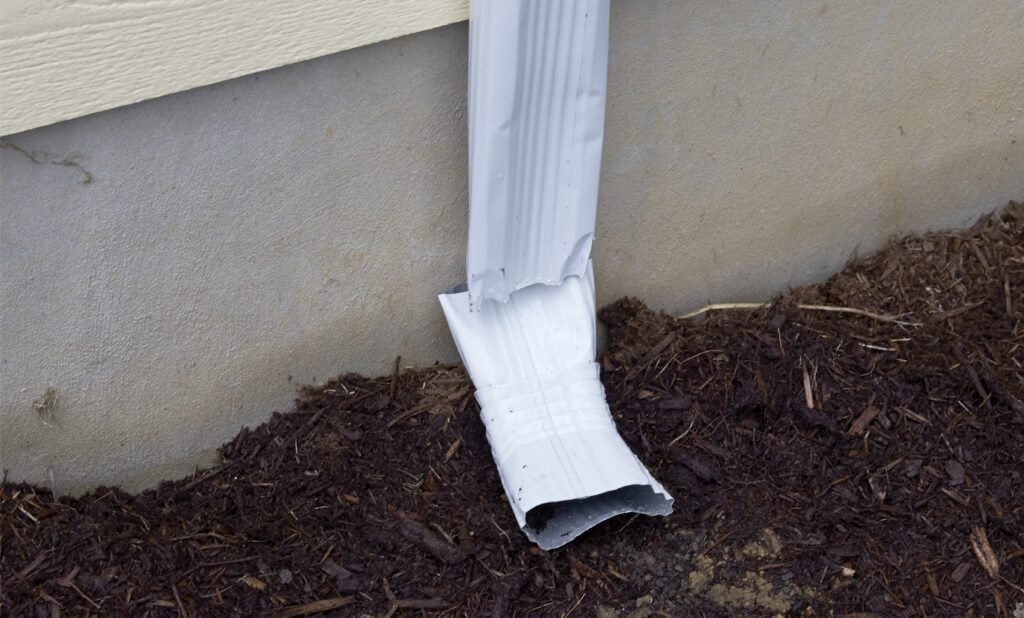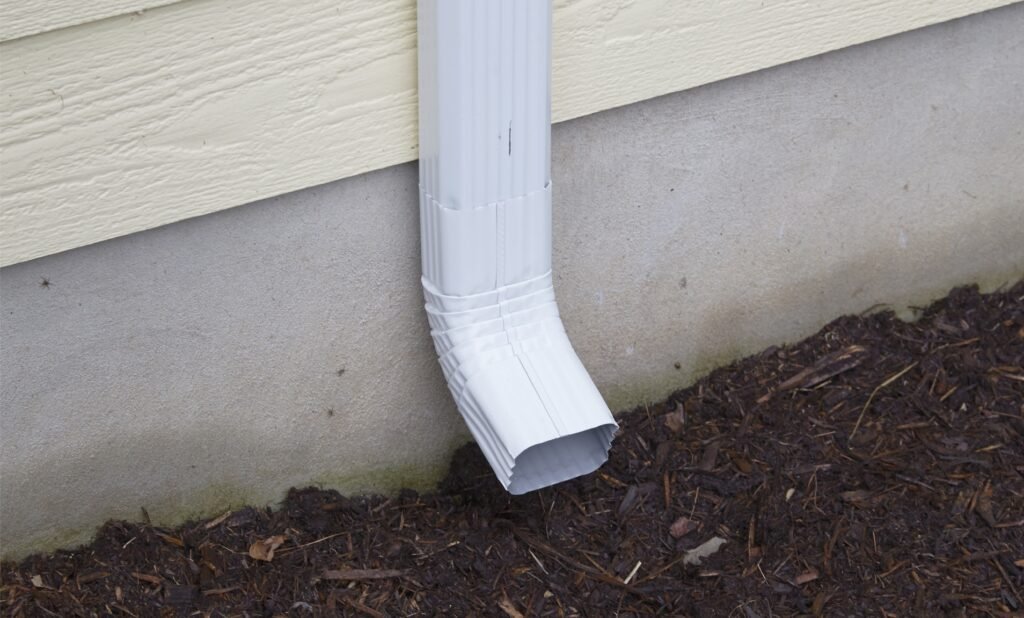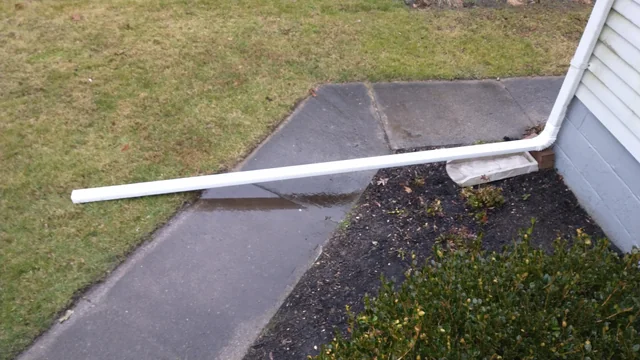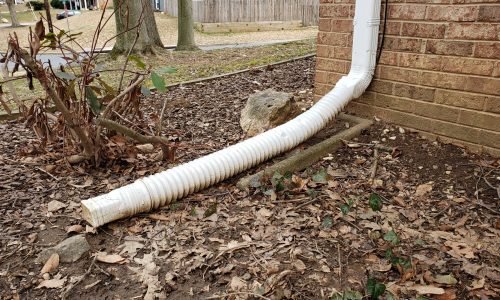- 022 315 8987
- info@myhomesconstruct.co.nz
A dented gutter downspout might seem like a small issue, but for Auckland homeowners, it can lead to serious drainage problems if left unchecked. Downspouts are crucial for directing rainwater away from your home, protecting your foundation, walls, and landscaping from water damage. In a city like Auckland, where heavy rainfall and storms are common, even a minor dent can cause pooling, overflow, or leaks, potentially leading to costly repairs. Common causes of downspout dents include lawnmowers bumping into them, vehicles parked too close, or harsh weather like hail or falling branches—scenarios all too familiar in suburbs like Titirangi or the North Shore. While fixing a dented downspout can often be a manageable DIY task, there are times when professional help is the smarter choice. In this comprehensive guide, we’ll walk you through the step-by-step process to fix a dented gutter downspout, share pro tips to prevent future damage, and highlight when it’s best to call in the experts. For those tougher jobs, My Homes Construct, Auckland’s trusted gutter pros, is here to ensure your home stays protected.


Before diving into the repair process, let’s explore why a dented downspout is more than just a cosmetic issue, especially in Auckland’s wet and windy climate. Here’s what can happen if you ignore the damage:
Addressing a dented downspout promptly can prevent these issues, saving you time, money, and stress. Whether you choose to fix it yourself or call a professional, taking action is key to protecting your Auckland home.
Fixing a dented gutter downspout requires a few basic tools and materials to ensure a safe and effective repair. Gathering these items beforehand will make the process smoother and more efficient. Here’s what you’ll need:
Safety Tip: Ensure all tools are in good condition, and double-check that your ladder is rated for your weight and the height you’ll be working at. Auckland’s often-wet conditions can make ladders slippery, so take extra care.
With these tools and materials ready, you’ll be well-prepared to tackle the repair with confidence, ensuring your downspout is restored to full functionality.


Follow this detailed step-by-step guide to fix a dented gutter downspout, designed with Auckland homeowners in mind. This process covers both metal and plastic downspouts, with safety and practicality at the forefront.
Before starting the repair, take a close look at the downspout to understand the extent of the damage and plan your approach.
A thorough assessment helps you decide whether to repair or replace the downspout, ensuring you address all issues to prevent future drainage problems.
For larger dents or to work more comfortably, you may need to remove the downspout. This step is optional for minor dents that can be fixed in place.
Safety Warning: Avoid working in wet or windy conditions, as Auckland’s weather can make ladders slippery and dangerous. Never overreach—reposition the ladder as needed.
Removing the downspout gives you better access to the dent, making the repair process more manageable, especially for larger or deeper dents.
If your downspout is metal (aluminium or galvanised steel), a rubber mallet and wooden block can help reshape the dent without causing further damage.
This method is effective for metal downspouts, restoring their shape and ensuring proper water flow without compromising structural integrity.
For vinyl or PVC downspouts, heat is the best way to soften the material for reshaping, as these plastics are more flexible when warm.
Caution: Avoid overheating the plastic, as this can cause warping or melting, making the downspout unusable. Work in a well-ventilated area to avoid inhaling fumes.
Heat reshaping is a simple and effective way to fix vinyl downspouts, ensuring they regain their shape and functionality.
Once the dent is fixed, reattach the downspout and seal any joints to ensure a watertight connection.
Eco Tip: Use a low-VOC sealant to minimise environmental impact, a choice that aligns with Auckland’s focus on sustainability.
Sealing the joints ensures the downspout remains watertight, preventing leaks that could lead to further damage.
Testing the downspout after repair is crucial to confirm it directs water away from your home effectively.
Testing confirms your repair is successful, protecting your Auckland home from water damage during the city’s frequent rains.


Preventing future dents in your downspout can save you time and money, keeping your gutter system in top shape. Here are expert tips tailored for Auckland homeowners:
Maintenance Tip: After major storms, check your downspouts for dents or debris blockages to catch issues early, especially given Auckland’s unpredictable weather patterns.
These tips will help keep your downspouts dent-free, ensuring your gutter system functions effectively year-round.
While many dents can be fixed with a DIY approach, some situations call for replacing the downspout entirely. Here’s when replacement is the better option:
Cost Consideration: DIY repairs typically cost $20–$50 for tools and materials, while a replacement downspout section costs $50–$100. Professional replacement in Auckland can range from $150–$500, depending on access and complexity, but ensures compliance with NZ Building Code Clause E2.
If replacement is needed, My Homes Construct can provide expert installation, ensuring your new downspout is durable, compliant, and properly installed.
Don’t let a dented downspout put your Auckland home at risk of water damage. My Homes Construct is your local expert for gutter repairs, from minor dents to full replacements. Our experienced team ensures your gutter system is safe, functional, and ready to handle Auckland’s wet weather, whether you’re in a villa in Ponsonby or a modern home in the North Shore.
📞 Call the My Homes Gutter Experts: 022 315 8987
📧 Email: info@myhomesconstruct.co.nz
🌐 Website: https://myhomesconstruct.co.nz
Contact us today for a free consultation and let us keep your home protected!
Can I fix a dented downspout without removing it?
Yes, for minor dents, you can reshape the downspout in place using a rubber mallet for metal or a heat gun for plastic. However, removing it gives you better access and reduces the risk of damaging other sections.
How do I know if I should replace the downspout entirely?
Replace the downspout if it’s cracked, rusted, severely crushed, or has persistent drainage issues after repair. Brittle or UV-damaged plastic downspouts may also need replacing, as they’re prone to further damage.
Is it better to repair metal or plastic downspouts?
Metal downspouts (like aluminium) are often easier to repair, as they can be reshaped without breaking. Plastic downspouts can be trickier—if they’re brittle or cracked, replacement is usually better, as heat reshaping may not last.
How often should I inspect my downspouts in Auckland?
Inspect your downspouts twice a year—before winter and after summer—along with your regular gutter cleanings. Check for dents, rust, or blockages, especially after storms, given Auckland’s wet climate.
Can a dented downspout cause foundation damage?
Yes, a dented downspout can disrupt water flow, causing overflow that seeps into the ground near your foundation. In Auckland’s clay soils, this can lead to foundation cracks or erosion over time.
Fixing a dented gutter downspout is a manageable DIY task that can save your Auckland home from serious drainage issues, especially when tackled early. By following this step-by-step guide—assessing the damage, reshaping the dent, sealing joints, and testing the flow—you can restore your downspout’s functionality and protect your property from water damage. Regular maintenance, like installing protective guards and keeping objects clear of the downspout, can prevent future dents, ensuring your gutter system stays in top shape through Auckland’s rainy seasons. However, if the damage is severe, involves cracks, rust, or persistent drainage problems, or if you’re dealing with a hard-to-reach area, it’s best to call in the professionals. My Homes Construct offers fast, affordable gutter solutions for Auckland homeowners, from minor repairs to full replacements. Contact us at 022 315 8987, email info@myhomesconstruct.co.nz, or visit https://myhomesconstruct.co.nz for expert help. Let us keep your home safe and dry, no matter the weather!
WhatsApp us